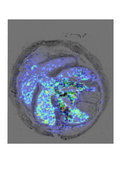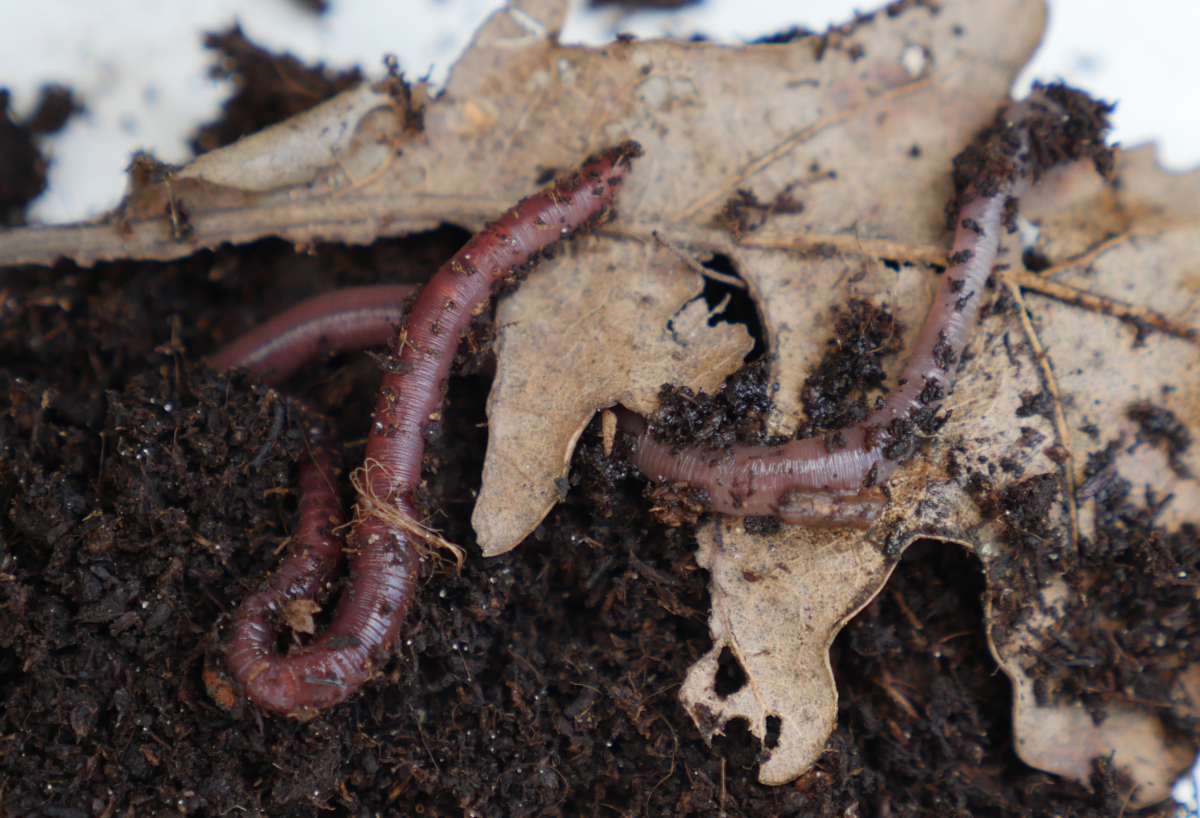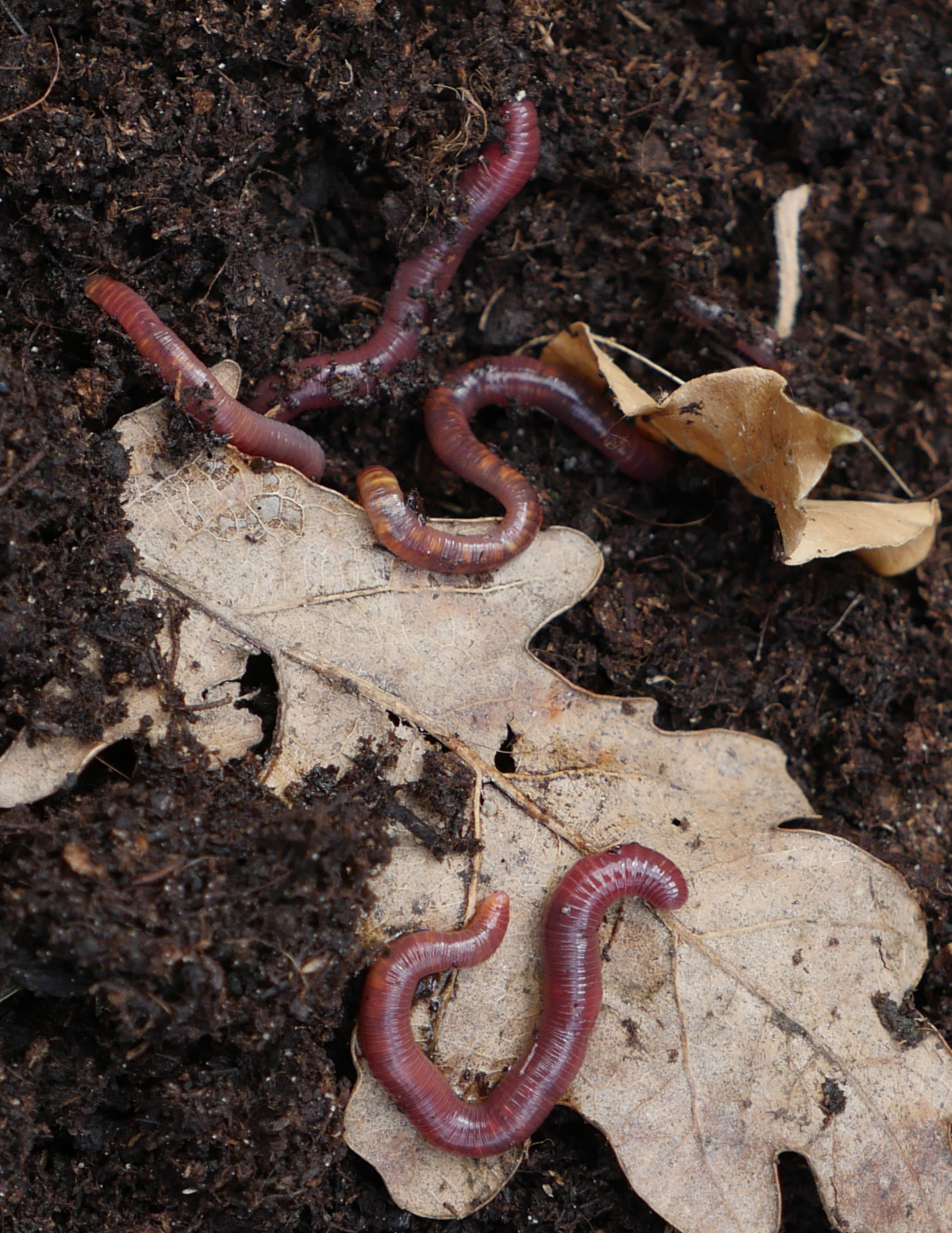Page path:
- Press Office
- Press releases 2015
- 04.08.2015 Hazardous Diet: How Earthworms prote...
04.08.2015 Hazardous Diet: How Earthworms protect themselves against toxic plant ingredients
Hazardous Diet: How Earthworms protect themselves against toxic plant ingredients
Scientists have discovered how earthworms can digest plant material, such as fallen leaves, that would defeat most other herbivores. Earthworms are responsible for returning the carbon locked inside dead plant material back to into the ground. They drag fallen leaves and other plant material down from the surface and eat them, enriching the soil, and they do this in spite of toxic chemicals produced by plants to deter herbivores.
The scientists led by Dr Manuel Liebeke have identified molecules in the earthworm gut that counteract the plant’s natural defences and enable digestion. Their work is published in Nature Communications.
These molecules, which have been named drilodefensins, are so abundant that Dr Liebeke estimates that for every person on earth there is at least one kilogram of drilodefensins present within the earthworms that populate the world’s soils. Their abundance is not, however, an excess – drilodefensins are so precious that earthworms recycle the molecules in order to harness their effects again.
A world without drilodefensins would be a very different world, according to the researchers. Dr Bundy, from the Department of Surgery & Cancer, said, “Without drilodefensins, fallen leaves would remain on the surface of the ground for a very long time, building up to a thick layer. Our countryside would be unrecognisable, and the whole system of carbon cycling would be disrupted.”
Plants make polyphenols, which act as antioxidants and give the plants their colour, they also inhibit the digestion of many herbivores. Earthworms, however, are able to digest fallen leaves and other plant material, thanks to the ability of drilodefensins to counteract polyphenols. Dr Bundy and his team found that the more polyphenols present in the earthworm diet, the more drilodefensins they produce in their guts.
The finding that the molecules are abundant in the gut of earthworms was made possible by using modern visualization techniques based on mass spectrometry (MALDI imaging). Dr Liebeke , formerly of the Department of Surgery & Cancer, and now working at the Max Planck Institute for Marine Microbiology, in Germany, said, “Using these molecular microscopes is changing how we understand complex biochemistry of living beings; we are now able to locate every molecule in, for example, an earthworm to a specific location. Knowing the location of a molecule can help us to figure out what it actually does.”
For more information please contact:
Dr. Manuel Liebeke
Max-Planck-Institut für Marine Mikrobiologie, Celsiusstr. 1
D-28359 Bremen, Telefon:0421 2028 - 825
[Bitte aktivieren Sie Javascript]
or the press officer
Dr. Manfred Schloesser
Max-Planck-Institut für Marine Mikrobiologie, Celsiusstr. 1
D-28359 Bremen, Telefon:0421 2028 - 704
[Bitte aktivieren Sie Javascript]
Institutes
Department of Surgery and Cancer, Imperial College London, London, UK;
Department of Materials, Imperial College London, UK;
Cardiff School of Biosciences, Cardiff University, Cardiff, UK;
Bruker Daltonik GmbH, Bremen, Germany;
Department of Chemistry, Chemistry Research Laboratory, University of Oxford, Oxford, UK
Centre for Ecology and Hydrology, Wallingford, Oxon, UK;
Max Planck Institute for Marine Microbiology, Bremen
Scientists have discovered how earthworms can digest plant material, such as fallen leaves, that would defeat most other herbivores. Earthworms are responsible for returning the carbon locked inside dead plant material back to into the ground. They drag fallen leaves and other plant material down from the surface and eat them, enriching the soil, and they do this in spite of toxic chemicals produced by plants to deter herbivores.
The scientists led by Dr Manuel Liebeke have identified molecules in the earthworm gut that counteract the plant’s natural defences and enable digestion. Their work is published in Nature Communications.
These molecules, which have been named drilodefensins, are so abundant that Dr Liebeke estimates that for every person on earth there is at least one kilogram of drilodefensins present within the earthworms that populate the world’s soils. Their abundance is not, however, an excess – drilodefensins are so precious that earthworms recycle the molecules in order to harness their effects again.
A world without drilodefensins would be a very different world, according to the researchers. Dr Bundy, from the Department of Surgery & Cancer, said, “Without drilodefensins, fallen leaves would remain on the surface of the ground for a very long time, building up to a thick layer. Our countryside would be unrecognisable, and the whole system of carbon cycling would be disrupted.”
Plants make polyphenols, which act as antioxidants and give the plants their colour, they also inhibit the digestion of many herbivores. Earthworms, however, are able to digest fallen leaves and other plant material, thanks to the ability of drilodefensins to counteract polyphenols. Dr Bundy and his team found that the more polyphenols present in the earthworm diet, the more drilodefensins they produce in their guts.
The finding that the molecules are abundant in the gut of earthworms was made possible by using modern visualization techniques based on mass spectrometry (MALDI imaging). Dr Liebeke , formerly of the Department of Surgery & Cancer, and now working at the Max Planck Institute for Marine Microbiology, in Germany, said, “Using these molecular microscopes is changing how we understand complex biochemistry of living beings; we are now able to locate every molecule in, for example, an earthworm to a specific location. Knowing the location of a molecule can help us to figure out what it actually does.”
For more information please contact:
Dr. Manuel Liebeke
Max-Planck-Institut für Marine Mikrobiologie, Celsiusstr. 1
D-28359 Bremen, Telefon:0421 2028 - 825
[Bitte aktivieren Sie Javascript]
or the press officer
Dr. Manfred Schloesser
Max-Planck-Institut für Marine Mikrobiologie, Celsiusstr. 1
D-28359 Bremen, Telefon:0421 2028 - 704
[Bitte aktivieren Sie Javascript]
Institutes
Department of Surgery and Cancer, Imperial College London, London, UK;
Department of Materials, Imperial College London, UK;
Cardiff School of Biosciences, Cardiff University, Cardiff, UK;
Bruker Daltonik GmbH, Bremen, Germany;
Department of Chemistry, Chemistry Research Laboratory, University of Oxford, Oxford, UK
Centre for Ecology and Hydrology, Wallingford, Oxon, UK;
Max Planck Institute for Marine Microbiology, Bremen
Original publication
Unique metabolites protect earthworms against plant polyphenols.
Liebeke, Manuel; Strittmatter, Nicole; Fearn, Sarah; Morgan, A John; Kille, Peter; Fuchser, Jens; Wallis, David, Palchykov, Vitalii; Robertson, Jeremy; Lahive, Elma; Spurgeon, David J; McPhail, David; Takáts, Zoltán; Bundy, Jacob G
Nature Communications 2015, DOI 10.1038/ncomms8869
This work was part of a collaboration between Imperial College London and the Centre for Ecology and Hydrology, in the UK.
Additional contributions to the project came from Cardiff University and the University of Oxford.
The research was funded by the UK’s Natural Environment Research Council.
Unique metabolites protect earthworms against plant polyphenols.
Liebeke, Manuel; Strittmatter, Nicole; Fearn, Sarah; Morgan, A John; Kille, Peter; Fuchser, Jens; Wallis, David, Palchykov, Vitalii; Robertson, Jeremy; Lahive, Elma; Spurgeon, David J; McPhail, David; Takáts, Zoltán; Bundy, Jacob G
Nature Communications 2015, DOI 10.1038/ncomms8869
This work was part of a collaboration between Imperial College London and the Centre for Ecology and Hydrology, in the UK.
Additional contributions to the project came from Cardiff University and the University of Oxford.
The research was funded by the UK’s Natural Environment Research Council.
Earthworms in rich organic soil. As they burrow, the worms consume soil in order to remove nutrients from decaying organic matter such as leaves and roots.
They drag fallen leaves and other plant material down from the surface and eat them, enriching the soil. (Source Manuel Liebeke)
They drag fallen leaves and other plant material down from the surface and eat them, enriching the soil. (Source Manuel Liebeke)
Earthworms in a pile of leaf litter. (Source Manuel Liebeke)
Molecules in the earthworm gut that counteract the plant’s natural defences and enable digestion of toxic plant material. The amount of one of those molecules (drilodefensin) was visualized by means of imaging techniques based on mass spectrometry (MALDI MS imaging) and merged as pseudocolors onto a cross-section of an earthworm. (Source Manuel Liebeke)




